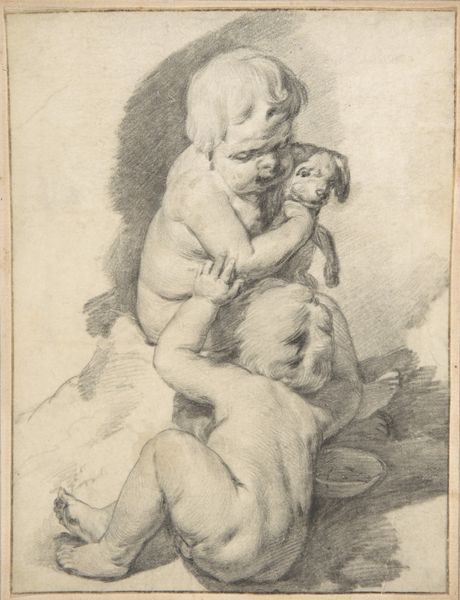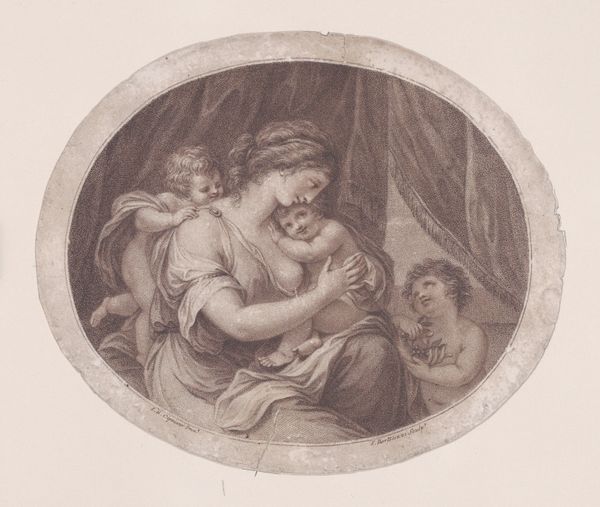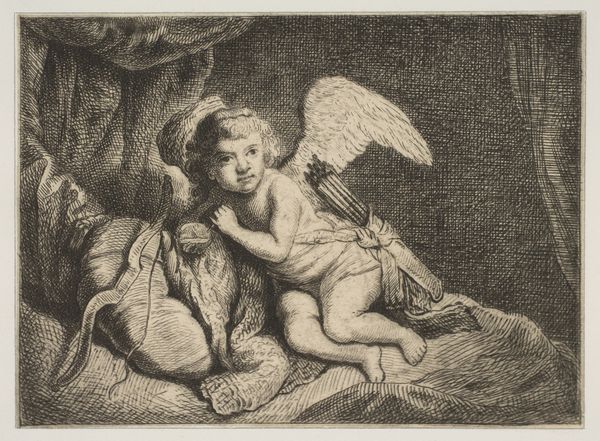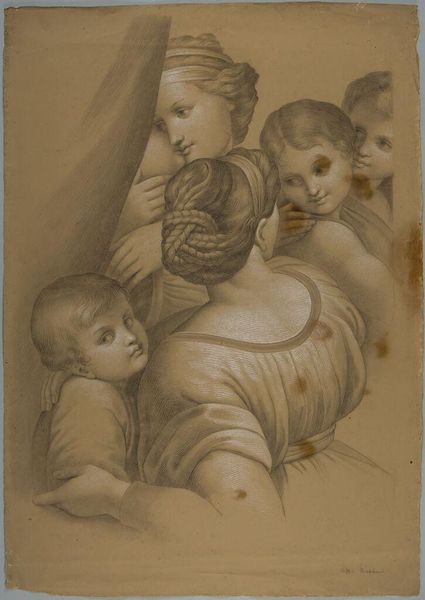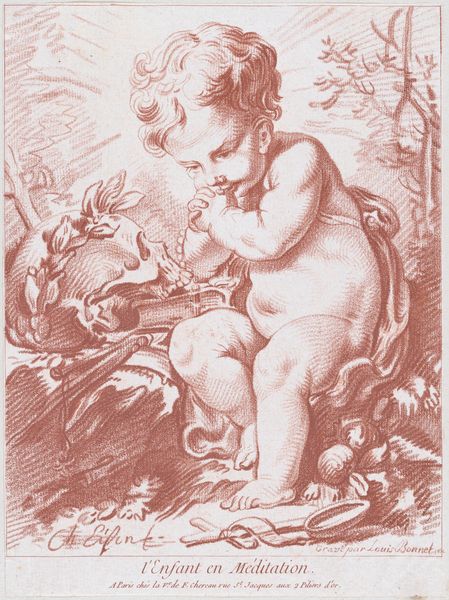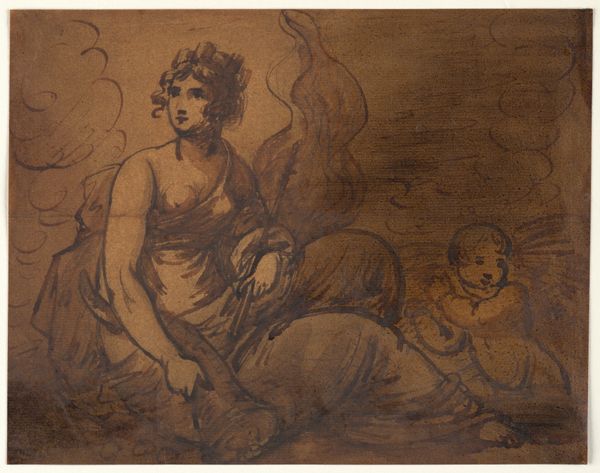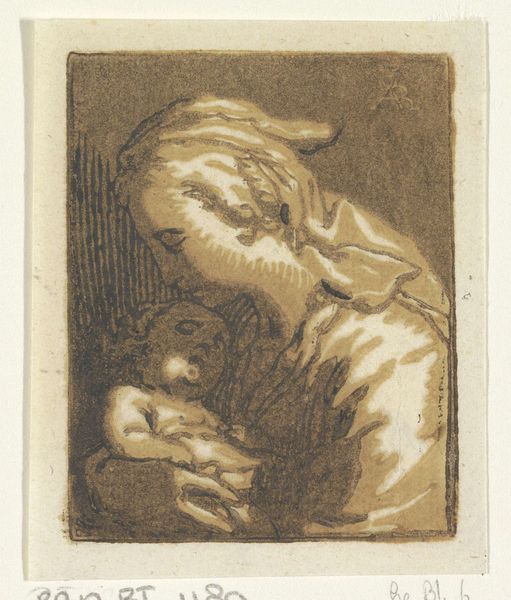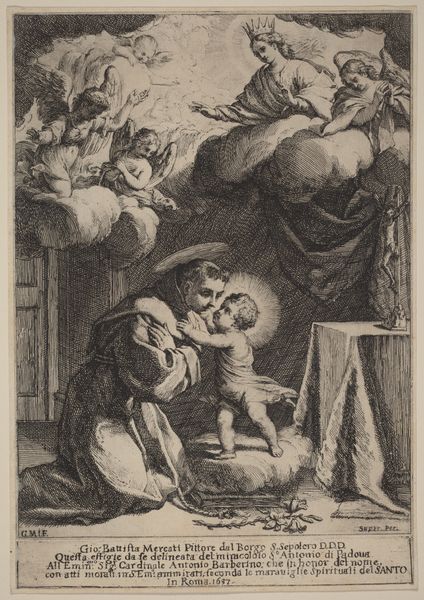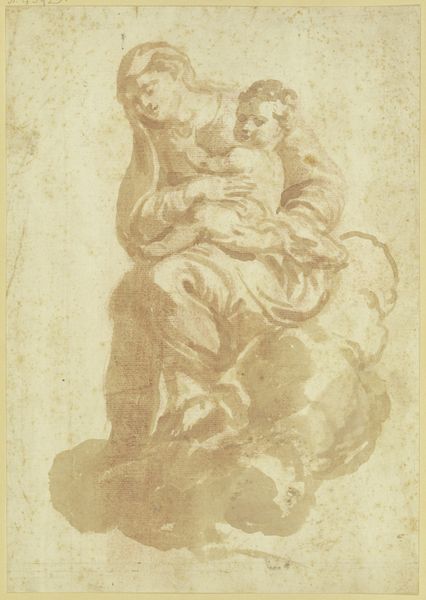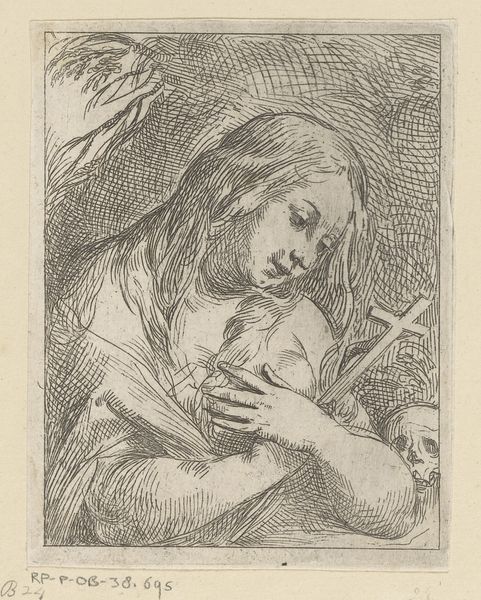
drawing, charcoal
#
drawing
#
charcoal drawing
#
figuration
#
11_renaissance
#
charcoal
#
italian-renaissance
#
nude
Dimensions: 118 mm (height) x 92 mm (width) (bladmaal)
Curator: This artwork is a charcoal drawing entitled "Madonna med barnet," or "Madonna and Child," created by Giacomo Cavedone sometime between 1577 and 1660. Editor: It has a powerful intimacy despite the rather somber palette. The oval format encloses the figures, intensifying that close, protective feeling, doesn’t it? Curator: Absolutely. Consider the socio-political context. Images of motherhood during this period served not just religious devotion but also reinforced societal expectations of women as nurturers. Cavedone's work presents an idealized image that, while aesthetically pleasing, also operates within a broader framework of gendered power dynamics. The idealization, after all, carries certain implications about what motherhood *should* be. Editor: I'm struck by the tender way the Madonna gazes down at the child, her face shadowed, almost mournful. The swaddling of the baby alludes to his future. There is definitely that *pieta* feeling here, and that maternal embrace--an unbroken motif in the depiction of mother and child. That is how Western culture knows this archetype, right? Curator: But even the nude figure of the child demands scrutiny. Consider how the vulnerability and innocence embodied in his nakedness contrast with the historical reality of childhood during this era. It's a poignant reminder of the often-fraught position of children within historical power structures, where their rights and agency were frequently disregarded. Editor: And charcoal adds to the emotion, a soft vulnerability through chiaroscuro, the Madonna emerging from the shadows, and embracing this sacred charge. These Renaissance iconographies are so important; to understand the historical roots is important to understand humanity itself. Curator: Precisely! The Renaissance wasn't simply about aesthetic innovation. It was a crucible of evolving social attitudes that we continue to negotiate today. Thinking critically about that, allows us to reflect on the image through the ages, in terms of what is maintained and what changes. Editor: Well, looking at this image together certainly enriches how one considers these iconic symbols that permeate both art and culture. Curator: Indeed, viewing artwork like this demands we embrace the complex interplay between image, history, and social reality.
Comments
No comments
Be the first to comment and join the conversation on the ultimate creative platform.
